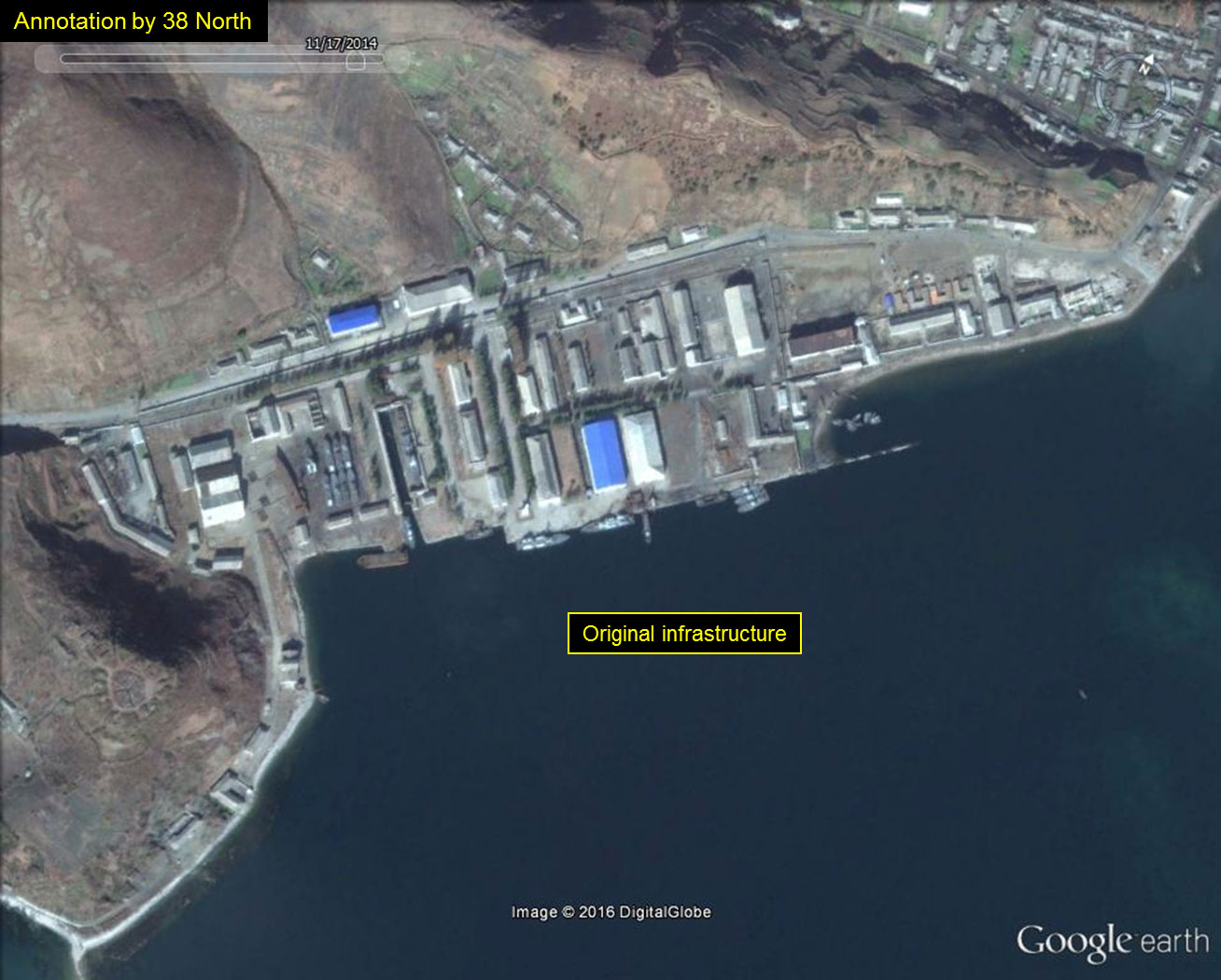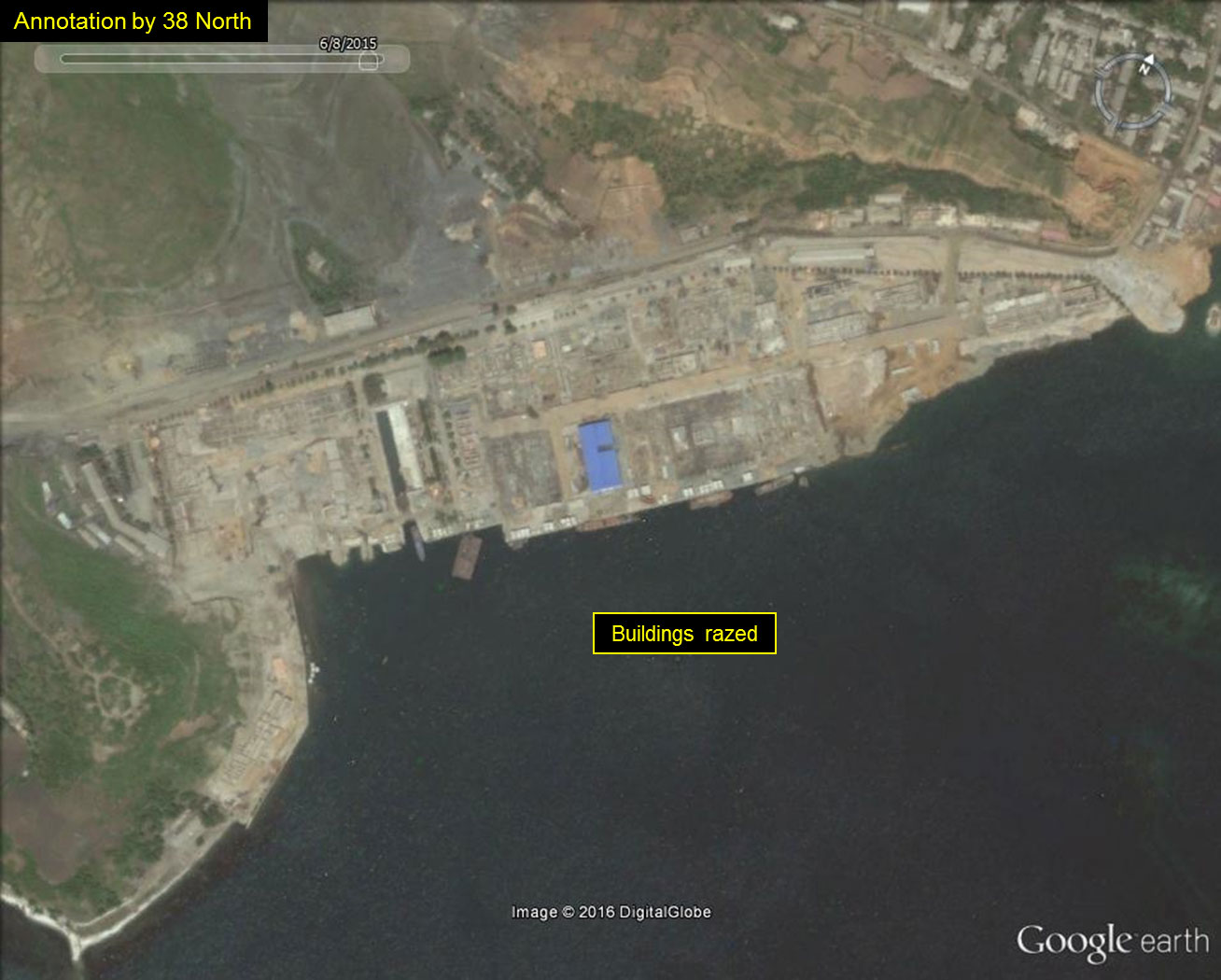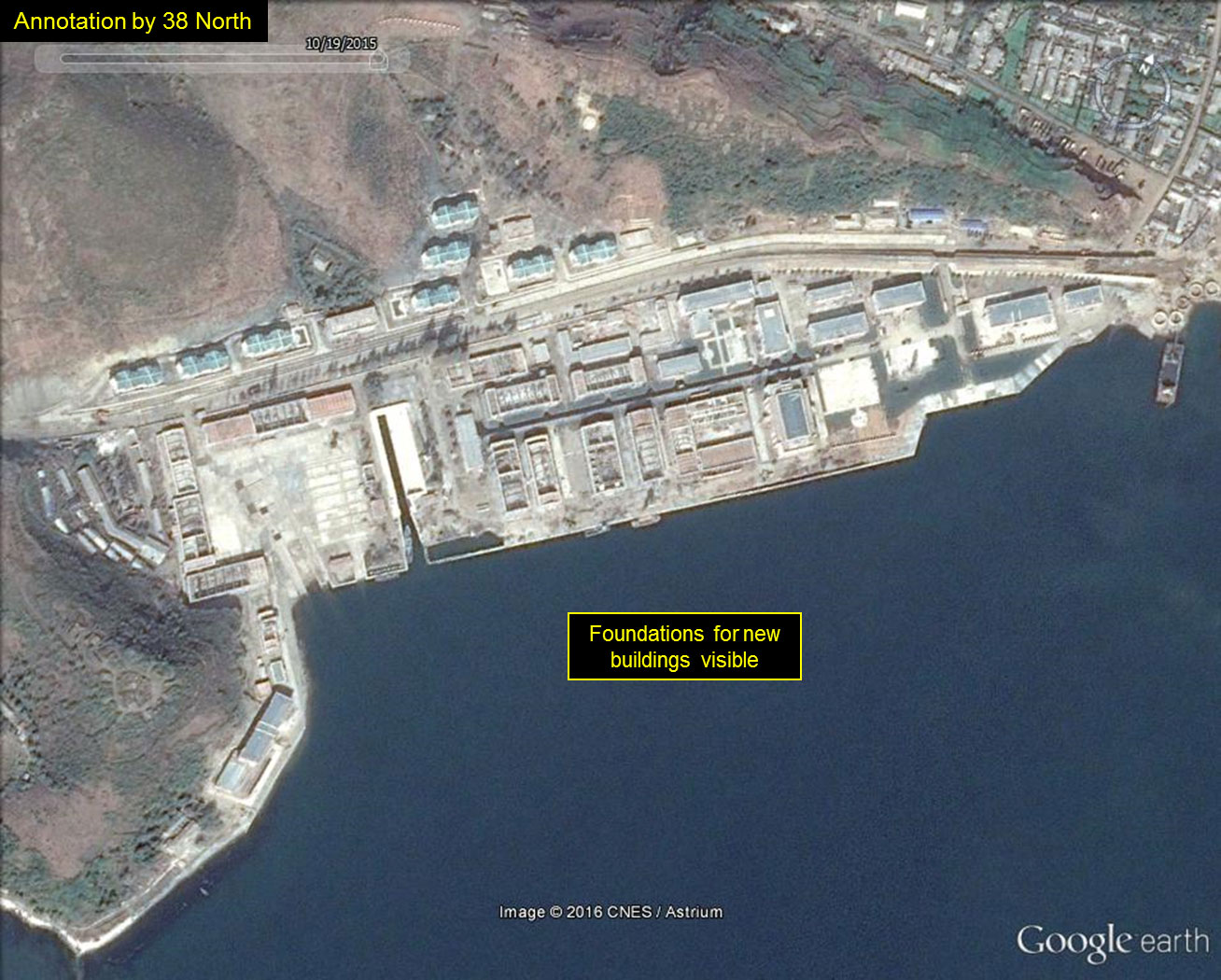KPA Navy Upgrades in the East Sea
Summary
Although international attention has focused on continued developments in North Korea’s nuclear and ballistic missile programs, commercial satellite imagery indicates that Pyongyang is also improving its conventional military forces. Notably, serious resources have been channeled into upgrading the North’s naval capabilities. Analyzing these improvements will help sharpen understanding of the North’s military strategy under Kim Jong Un.
The primary objective of the Korean People’s Navy (KPN) is coastal defense of the nation. Its secondary missions include supporting special operations forces and Korean People’s Army (KPA) wartime operations. One key site being upgraded is the Munchon Naval Base, located on the East Sea (Sea of Japan). Since 2014, there have been aggressive efforts at Munchon to enhance training facilities, upgrade conventional naval weapons systems, improve special operations capabilities, and develop new ship support facilities that remained relatively untouched during the Kim Jong Il regime. When complete, the infrastructure revitalization and organizational developments will likely:
- Increase the KPN’s operational readiness and coastal defense capabilities in the central portion of the East Sea;
- Moderately enhance the capabilities of North Korea’s amphibious special forces to conduct operations against the South Korean East Sea coast in wartime; and
- Have the potential to moderately increase the KPN’s ability to mount longer and more frequent naval patrols farther out into the East Sea.
Munchon Naval Base Site Overview
Located north of Wonsan, the Munchon Naval Base (39.309794°, 127.386974°) is the largest naval facility on the North Korea’s east coast and headquarters of the 13th Naval Command. Munchon is not a simple, discreet base, but a collection of at least 16 operational and support units located at various small bases around Kumya Bay and the Songjon Peninsula. The most notable of these naval units featured in the North Korean media and visited by the country’s leaders are KPA Navy Units 155, 597 and 291.
Figure 1. The Munchon Naval Base.
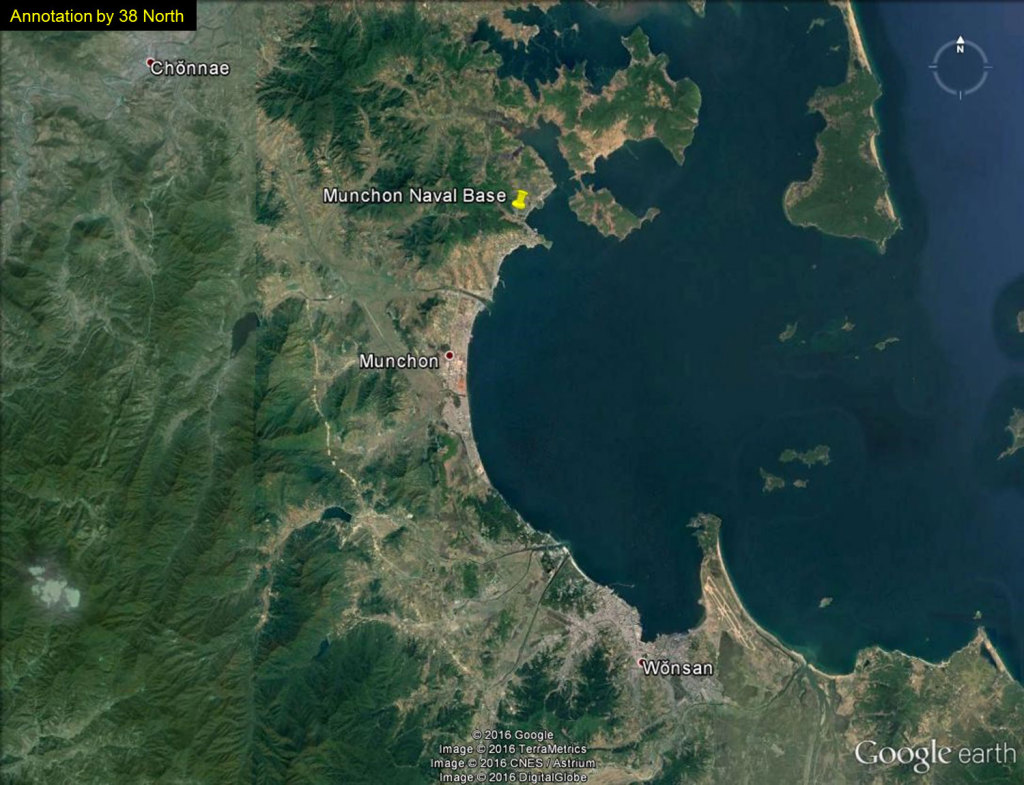
Figure 2. KPA Navy Units 155, 597 and 291.
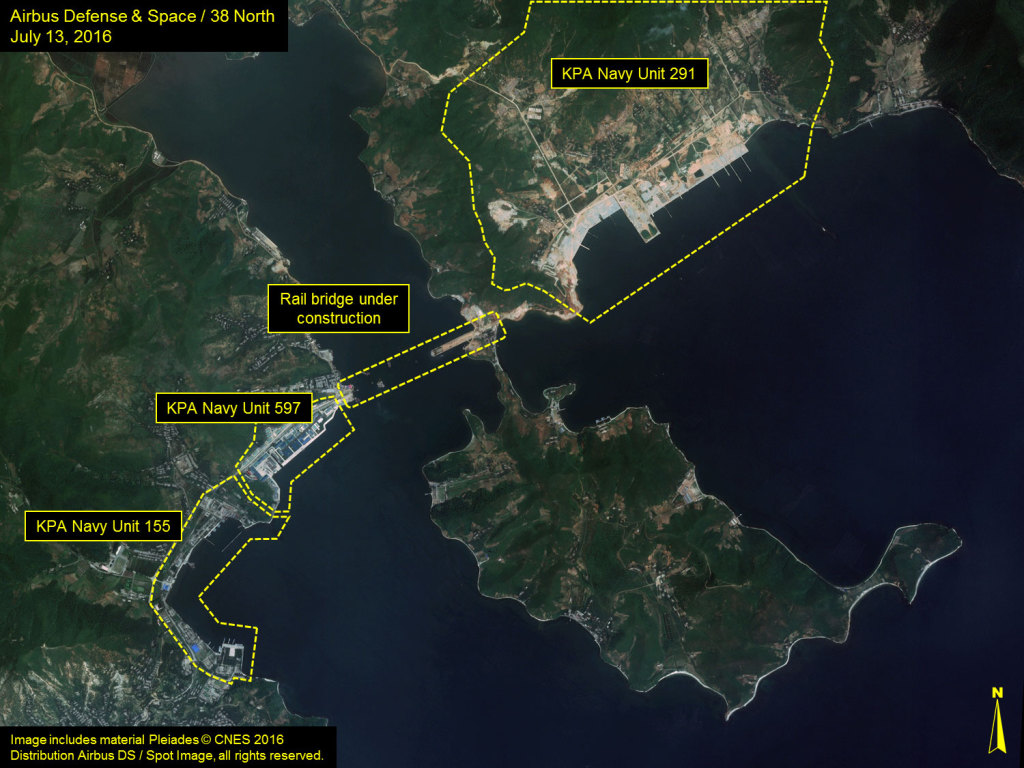
KPA Navy Unit 155
The headquarters of KPA Navy Unit 155 is located within the Munchon Naval Base (39.309794°, 127.386974°).[1] All three of North Korea’s leaders have visited this unit—Kim Il Sung in 1970, and Kim Jong Il in 2004 and 2008.[2] Kim Jong Un is reported to have visited the unit only once on April 5, 2012, just four months after the death of his father. Four known naval squadrons are subordinate to KPA Navy Unit 155: a patrol squadron, a torpedo squadron, a fast-attack squadron and a fire-support squadron.
Figure 3. Support and landing craft berthed at KPA Navy Unit 155.
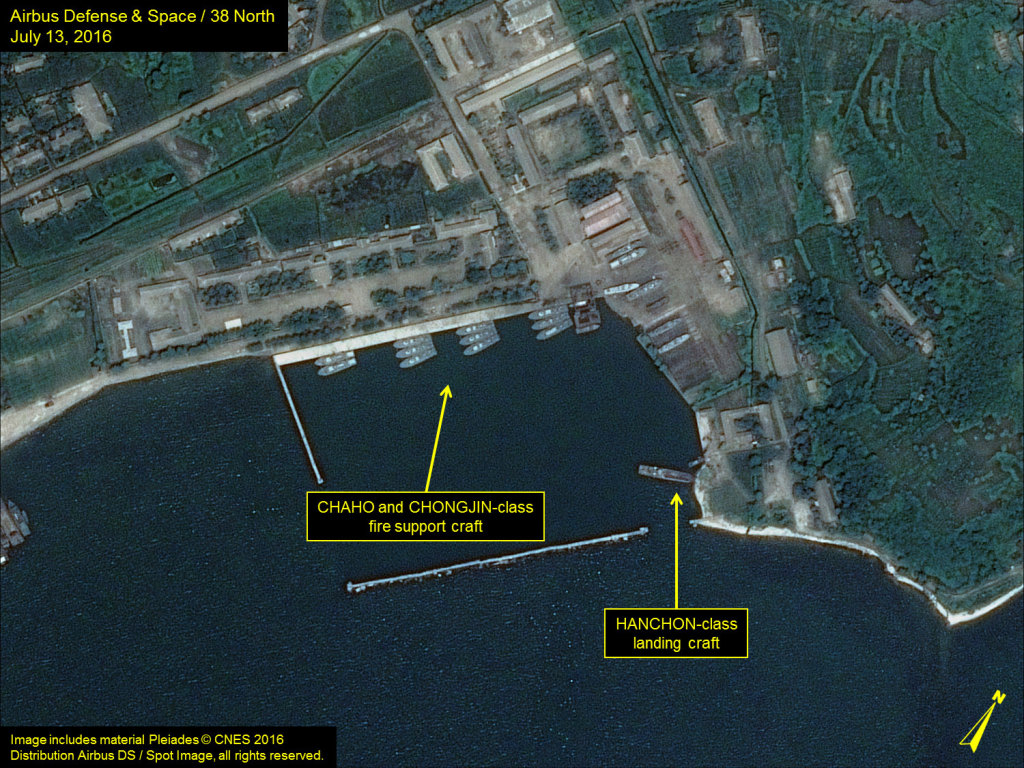
Figure 4. NONGO-class patrol craft berthed at KPA Navy Unit 155.
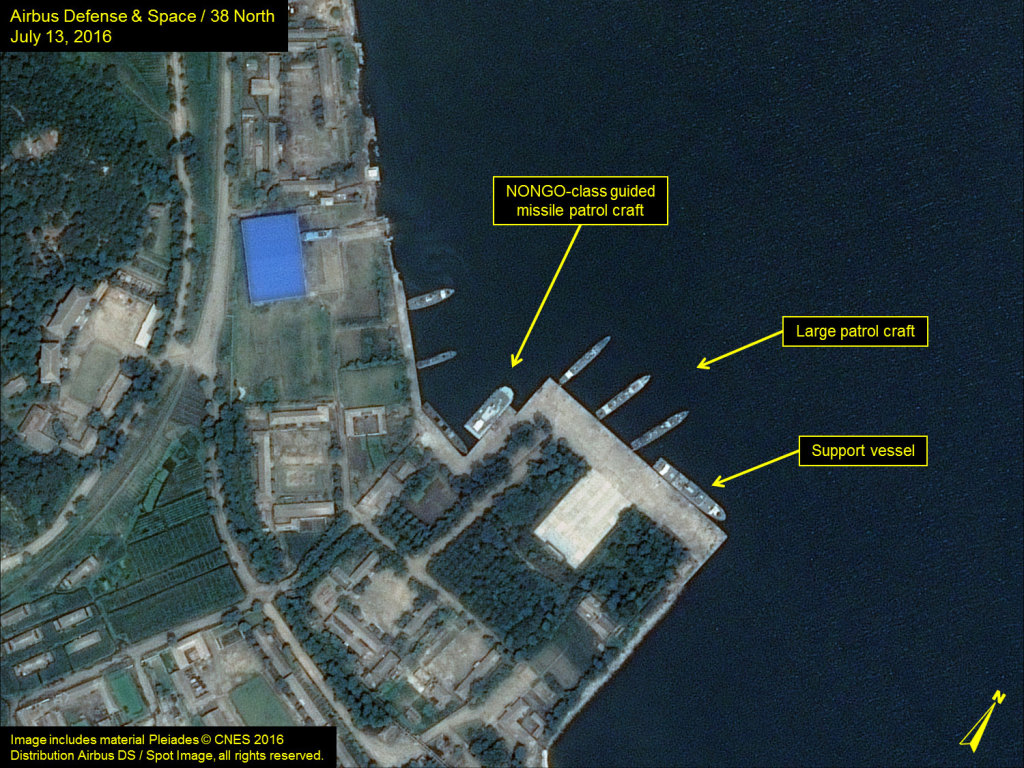
The most significant project within KPA Navy Unit 155 has been the testing and development of the single NONGO-class missile armed patrol craft which has been based with the unit since at least October 2008 and was responsible for the February 6, 2015 “Anti-Ship Rocket Test-firing” guided by Kim Jong Un.
As noted in a previous 38 North article, the vessel is approximately 38.5-meters-long and 13-meters-wide and has been modified with the addition of a sponson on each side of the hull. Two canister launchers for KH-35 missiles are mounted on each sponson. Should the new KH-35 missile system be successfully integrated into the KPN and widely deployed, it would pose an increased threat to South Korean and US Navy vessels in the region.
KPA Navy Unit 597 and the October 3 Dockyard
Just to the north of KPA Unit 155 lies the “October 3 Dockyard under KPA Navy Unit 597.” The facility is named for the date that Kim Il Sung first visited (October 3, 1961). The October 3 Dockyard is the primary KPN maintenance and repair facility on the East Sea coast, located south of the Sinpo South Shipyard and Mayang-do Naval Base.
Kim Jong Il reportedly brought Kim Jong Un to the factory on March 16, 2011, though it was vaguely reported in the official media as a visit to a “Factory under KPA Navy Unit 597.” Kim Jong Un, however, made his first visit as leader to the dockyard in February 2015, where he “gave field guidance … and set forth the task for [the dockyard’s] updating.” According to Rodong Sinmun, he stressed the need for the dockyard to update its production processes and noted the October 3 Dockyard’s important role to the North’s naval development.
Subsequently, as part of the Munchon area naval revitalization project, the entire area occupied by Unit 597 and its October 3 Dockyard was razed and rebuilt during 2015–2016.
Figure 5. Renovations to the October 3 Dockyard started in 2015.
Figure 6. October 3 Dockyard renovations complete.
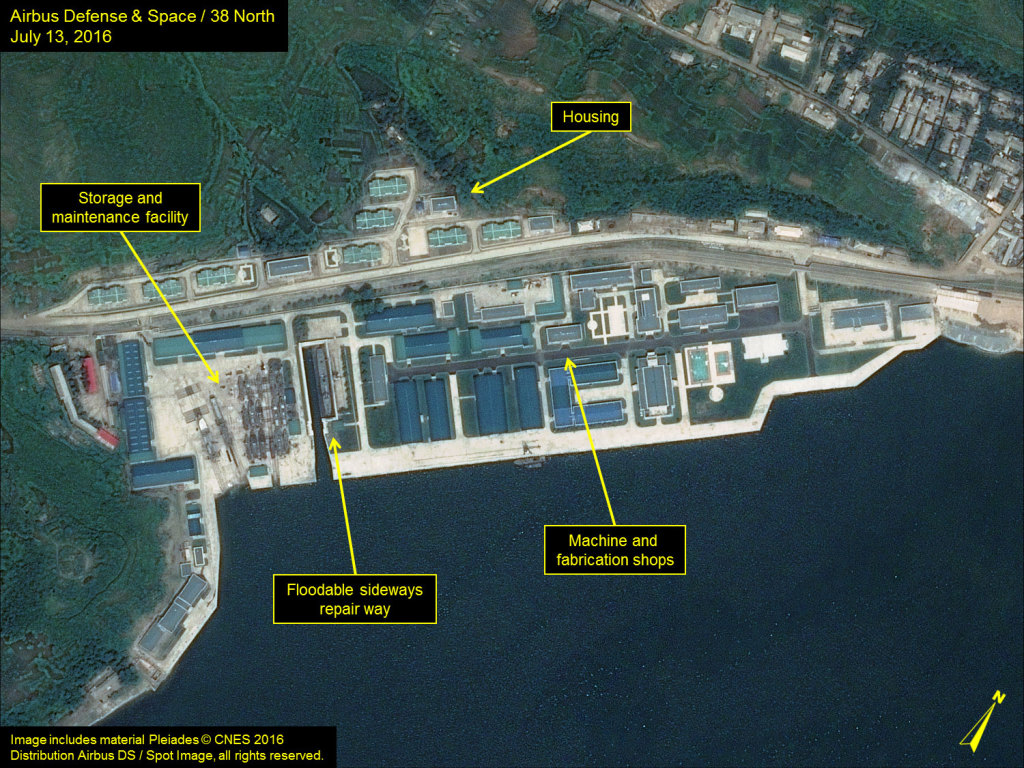
Following the completion of the revitalization project, Kim Jong Un returned to the facility on March 22, 2016. Rodong Sinmun reported Kim as stating, “The updating of the factory provided a solid material and technical foundation for repairing any warship in a short span of time.”
Today, the October 3 Dockyard consists of approximately 30 buildings organized into a headquarters and administration area, a storage and maintenance facility (with maritime railroad and transfer table), a 65-meter-long floodable sideways repair way (i.e., a dry-dock) for working on the hulls of vessels, various machine and fabrication shops (one of which is likely a maintenance facility for anti-ship missiles), and a warehouse area. Typically, there are 8–15 patrol craft or small vessels on land in the storage area, a vessel on the sideways repairway and several vessels present along the dock.
KPA Navy Unit 291
Located approximately 2.5 km to the northeast of the October 3 Dockyard, at Tapchon-ri on the Songjon Peninsula, is the headquarters and base for KPA Navy Unit 291.[3] This unit is a navy sniper brigade—an elite amphibious special operations unit of the East Sea Fleet. As such, it is not likely subordinate to the 13th Naval Command, but rather to the East Sea Fleet Headquarters.
Kim Jong Un’s first and only reported guidance visit to this unit was reported on May 27, 2013. The following year, construction began to both modernize and expand the base. When complete, it appears that all five navy sniper battalions of the East Sea Fleet will be consolidated at this base, with a total of 68–84 Kongbang II/III-class hovercraft being stored in new hardened shelters. This consolidation will improve training and coordination, and facilitate the maximum projection of amphibious forces against the South Korean east coast during a future conflict.
During the construction project, the unit’s hovercraft have been based at several small bases around the Songjon Peninsula and in underground berthing. Additionally, several have been sent for maintenance or upgrades at various naval yards along the east coast.
Figure 7. KPA Navy Unit 291 hovercraft bases.
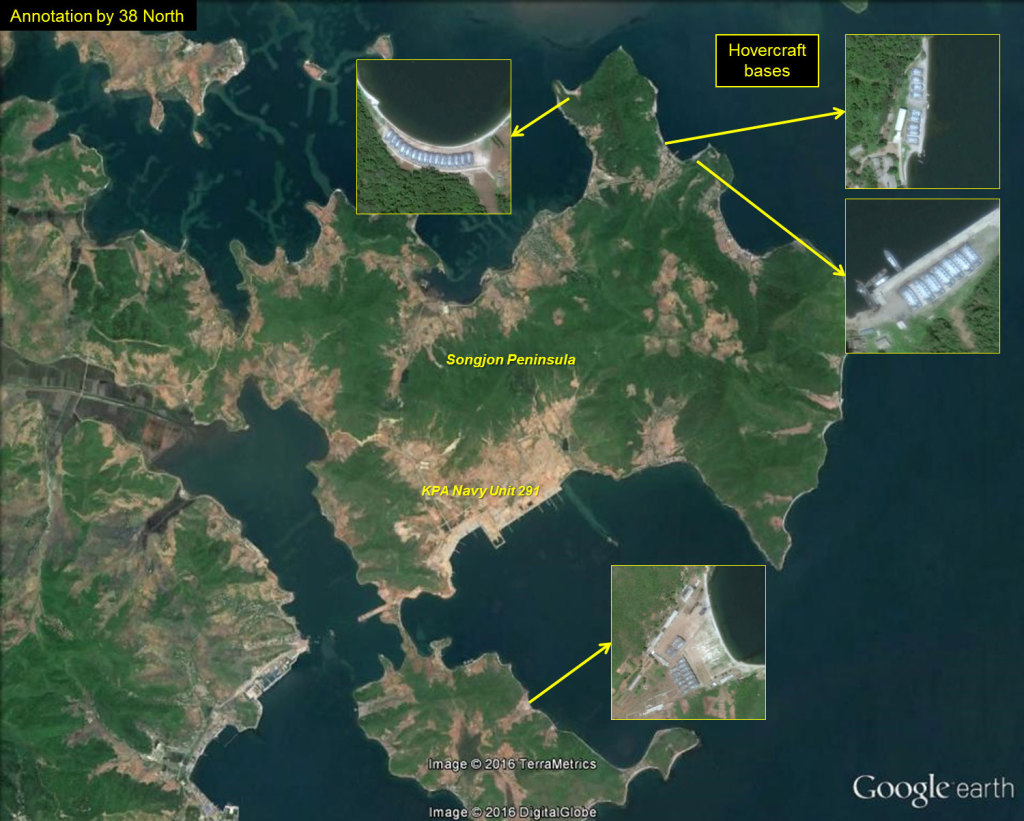
The construction project at Tapchon-ri has progressed slower than that of the October 3 Dockyard. This is probably due to the extensive nature of the project, which is set in a remote location and includes the razing and construction of new hardened shelters for hovercraft, housing and administration buildings, support and maintenance facilities, and the construction of approximately 2 km of dock and launching ramp frontage.
Figure 8. Ongoing renovations at KPA Navy Unit 291’s Tapchon-ri base.
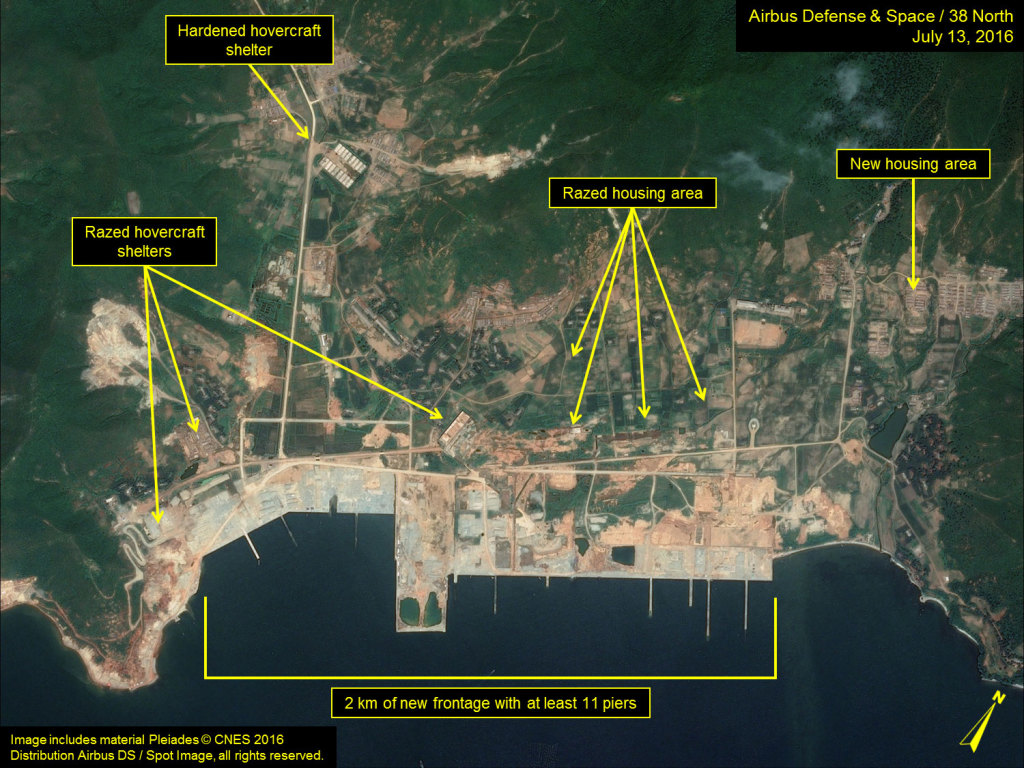
Supporting this effort has been the expansion of the October 3 Dockyard rail spur to connect to the Tapchon-ri base, which entails the construction of a 1-km-long rail bridge and a 230-m-long tunnel. When the rail bridge and tunnel are complete they will be used to transport equipment and material to the construction site. At present, the approach and abutment on the west side of the bridge are almost complete, the ballast and rail have been laid to the approach, the foundations for five support piers have been laid, and the 300 m of approach have been laid on the east side. At the rail tunnel, work is ongoing at the west portal, while the east portal appears complete.
Figure 9. Bridge construction underway.
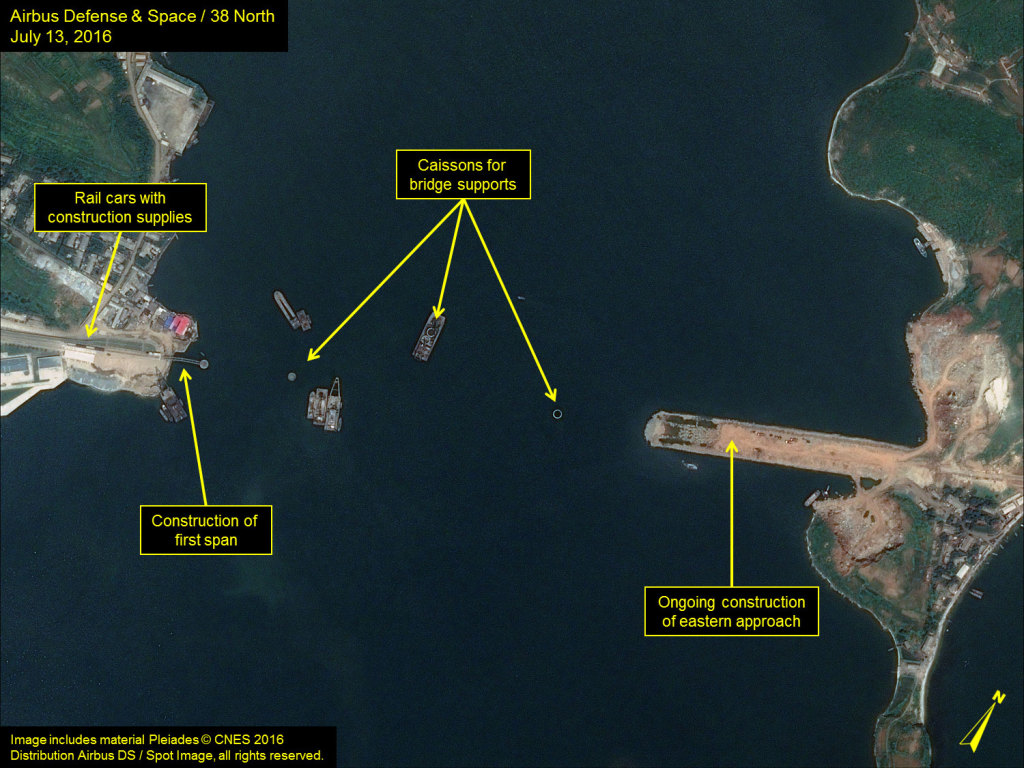
Figure 10. Rail tunnel portals under construction.
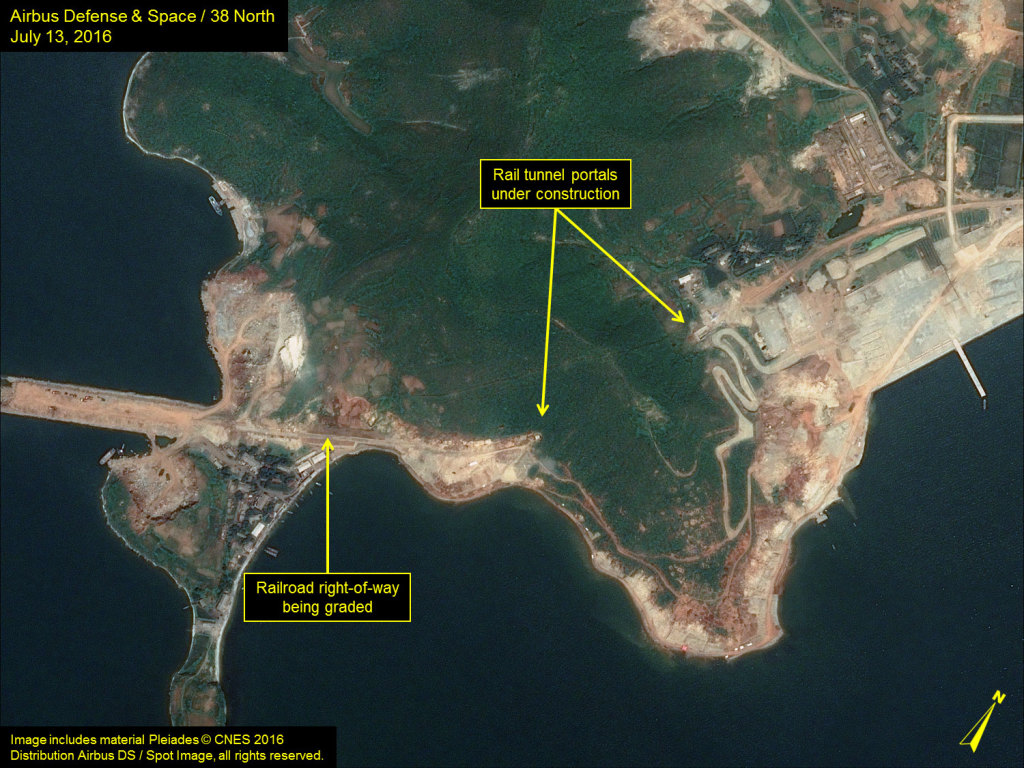
__________________
[1] The East Sea Fleet headquarters is now located at the Toejo-dong Naval Base, 70 kilometers to the northeast of Munchon.
[2] See https://www.youtube.com/watch?v=HEFltszNGas and https://www.youtube.com/watch?v=PQx9t0_Tlio.
[3] There are at least 12 subunits of the 13th Naval Command located on Songjon-bando.

